1: Indian Food
There are many famous dishes in India
Masala Dosa It is the most famous dish that you will find on your South India Tours. It’s like a pancake but much tastier, masala dosa is not only famous in our country but also abroad, served with potato vegetable, this snack will have you lick your fingers.
Recipe For Masala Dosa : Things You will need
Ingredients
Ingredients For Batter
- 1.5 cups idli rice – 330 grams, (parboiled rice, ukda chawal, sela chawal) or 1.5 cups regular rice
- ½ cup urad dal – 125 grams, husked whole or split black gram
- ¼ cup thick poha – 35 grams, flattened rice
- 1 tablespoon chana dal – husked and split bengal gram
- 20 fenugreek seeds (methi seeds)
- 1 cup water for soaking urad dal
- 2 cups water for soaking rice
- 1 cup water for grinding rice & poha
- ½ cup water for grinding dal
- ½ teaspoon rock salt (edible and food grade), add as required or sea salt or pink salt
Ingredients For Potato Filling
- 4 potatoes medium-sized potatoes – 300 grams or 2 cups boiled, chopped or crumbled potatoes
- 2 tablespoons oil – any neutral oil
- ½ teaspoon mustard seeds
- 1 tablespoon chana dal (husked and split bengal gram) soaked in ¼ cup hot water for 30 minutes – optional
- 1.25 cups thinly sliced onions or 2 medium to large – 150 grams
- 1 teaspoon finely chopped ginger or 1 inch ginger
- 8 to 10 curry leaves
- 1 teaspoon chopped green chillies or 1 to 2 green chillies
- ¼ teaspoon turmeric powder
- 1 pinch asafoetida (hing) – optional
- ½ cup water
- 3 tablespoons chopped coriander leaves
- 2 tablespoons cashews – optional
- ¼ to ½ teaspoon sugar – optional
- salt as required
- For Example follow this
Step #1 – Making masala dosa batter
1. First take all the ingredients in three bowls. Note that these ingredients are easily available online or any Indian or Asian grocery store if you live outside India.
- 1.5 cups idli rice or parboiled rice in one bowl. You can also use regular short-grained to medium-grained rice like sona masuri or parmal.
- ½ cup urad dal (husked black gram) + 1 tablespoon chana dal (husked and split bengal gram) + 20 methi seeds (fenugreek seeds) in a second bowl
- ⅓ cup thick poha (flattened rice) in a third bowl.
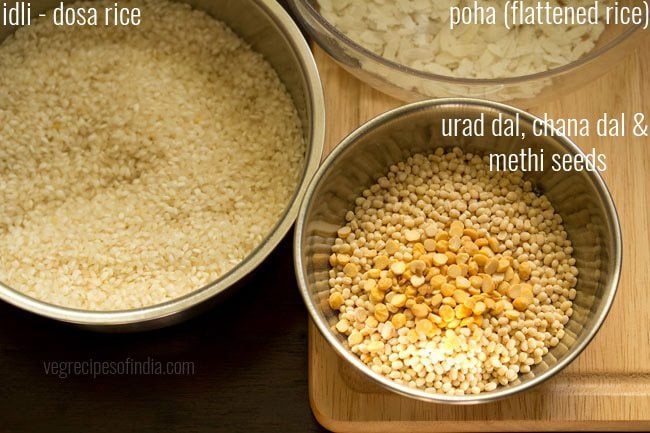
2. Rinse the lentils and fenugreek seeds a couple of times. Then soak them in 1 cup water for 4 to 5 hours.
TIP: Ensure to use urad dal that are fresh and within their shelf-period.
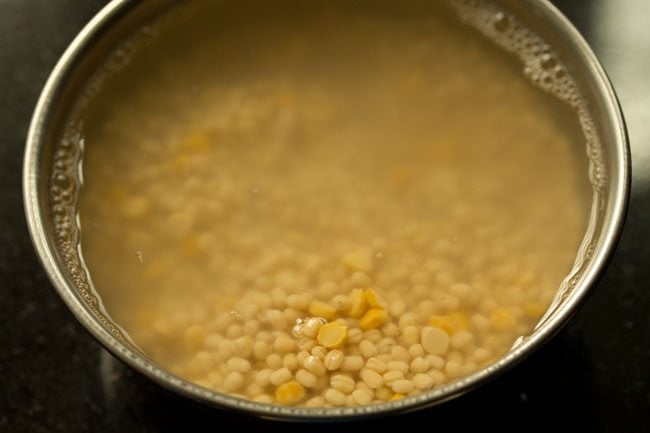
3. Rinse the rice a couple of times and keep aside.
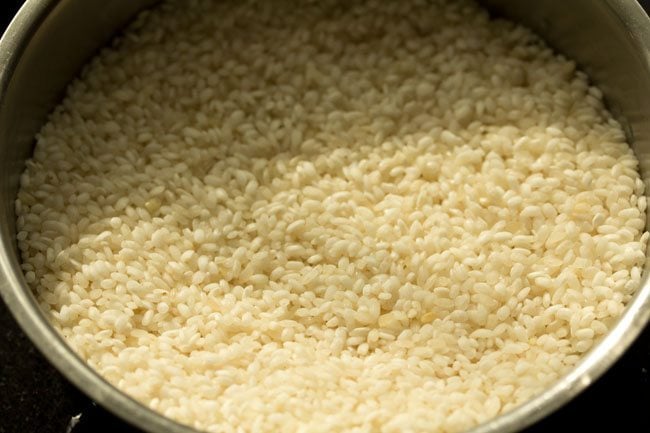
4. Rinse flattened rice once or twice and then add to the rice.
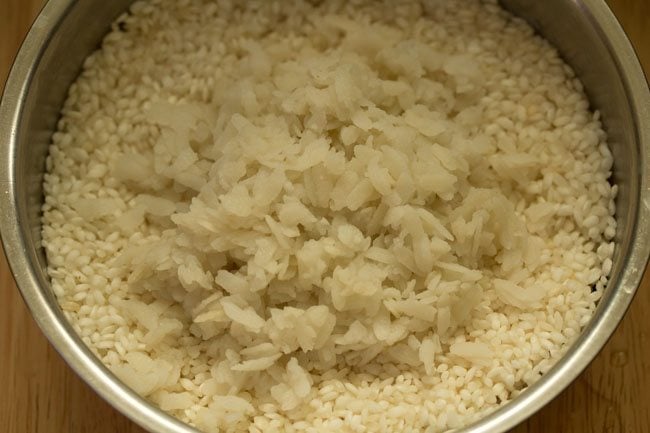
5. Pour 2 cups water. Stir and soak both rice and flattened rice together for 4 to 5 hours.
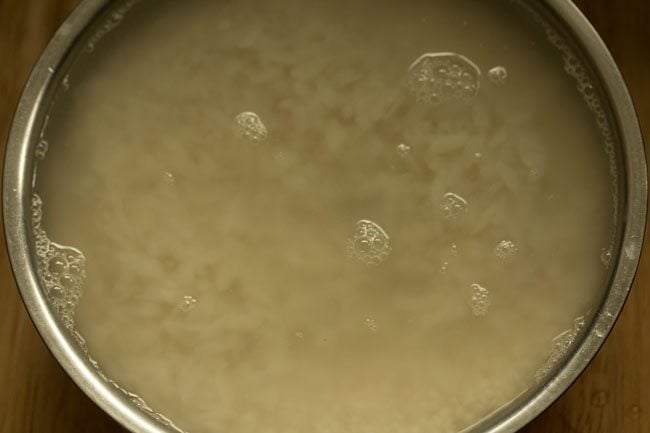
6. Before grinding, strain the water from the soaked lentils+fenugreek seeds and keep it for grinding urad dal. You can also use fresh water if you prefer.
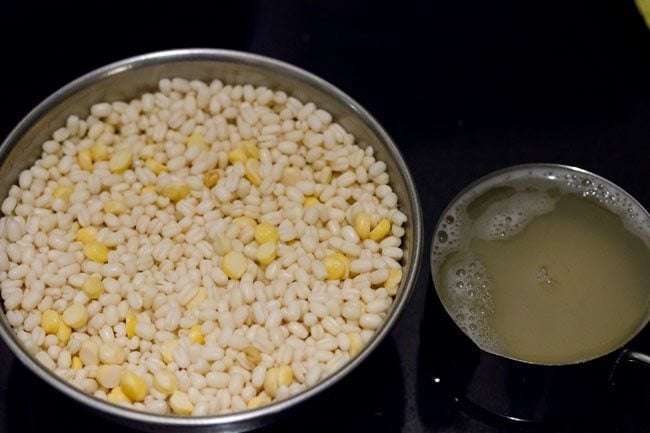
7. Add the lentils in the grinder jar. Also add ½ cup of the soaked and strained water to the lentils or ½ cup of fresh water if you like.
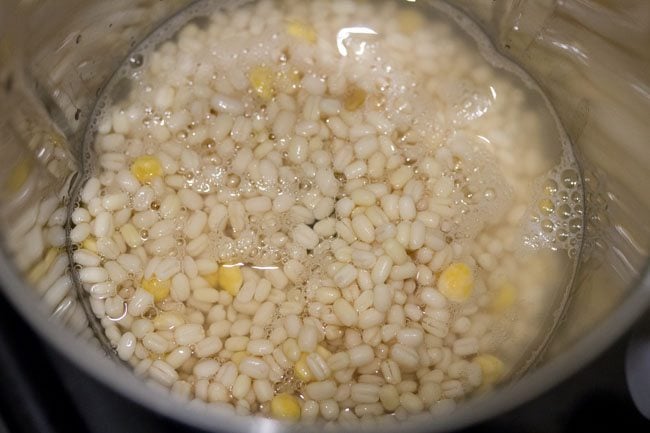
8. Grind the urad dal, chana dal and fenugreek seeds till you get a batter which is light and fluffy. The urad dal has to be ground really well, so that the dosa batter ferments well.
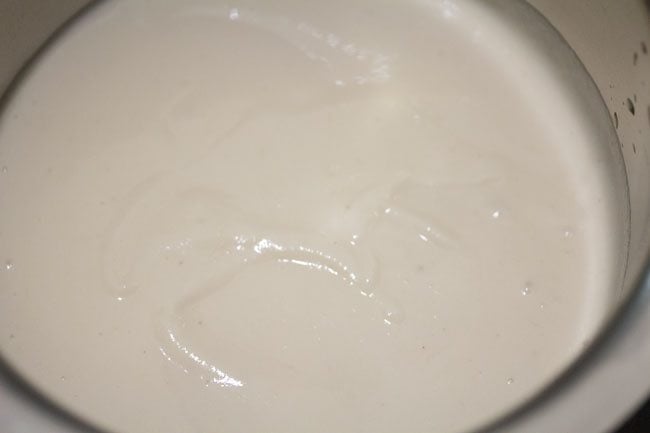
9. Remove batter in a bowl or pan with a spatula. Below is a photo showing the consistency of the urad dal batter.
Note that a well ground and fluffy urad dal batter helps in the fermentation process.
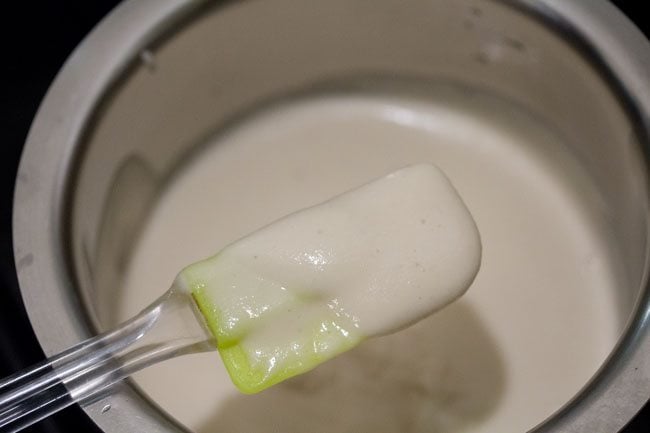
10. Strain the rice well. Then in the same grinder, add the soaked rice and 1 cup fresh water. You can grind rice in one batch or in two to three batches. This will depend on the size of the grinder jar.
I ground in one batch and added 1 cup water for grinding. You can even add ¾ cup water while grinding. Addition of water will depend on the quality of rice. So you may need to add less or more water.
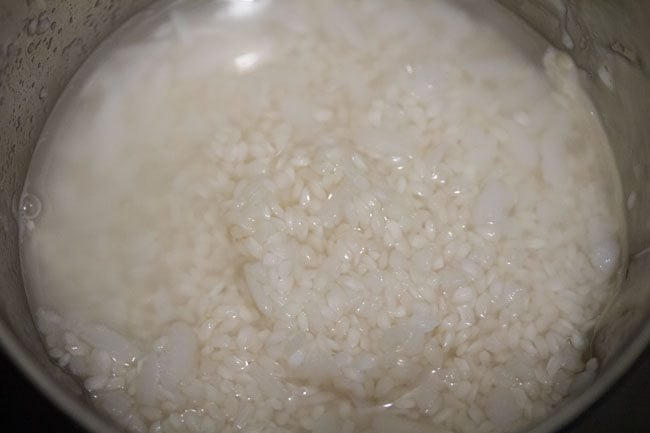
11. Grind the rice till you get a fine grainy consistency in it. The rice batter should have a fine rava (cream of wheat) like consistency of the ground rice grains.
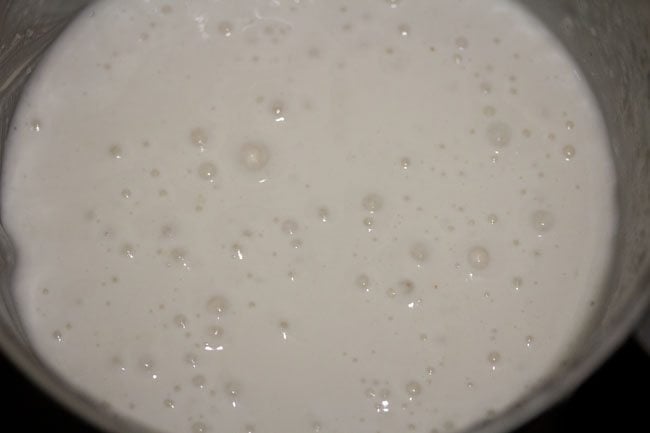
12. Now pour the rice+flattened rice batter in the same pan or bowl containing the urad lentil batter.
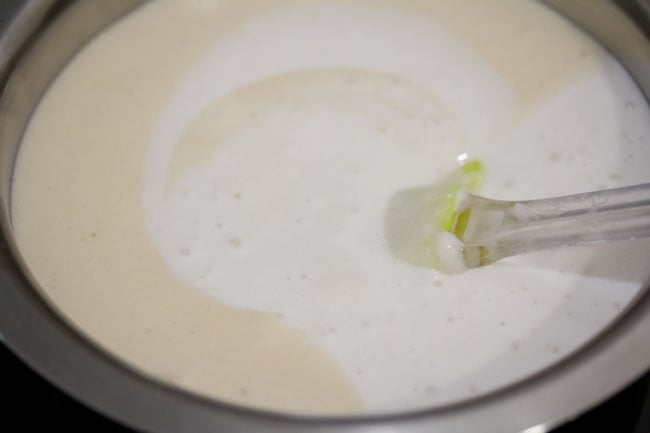
13. Add ½ teaspoon edible rock salt or add as per taste. You can also use sea salt or pink salt.
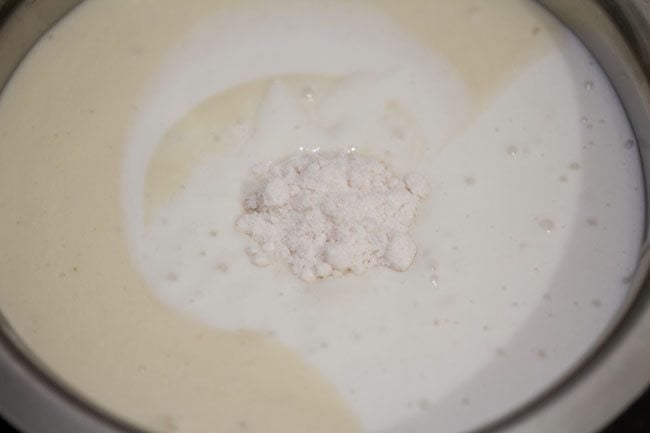
Step #2 – Fermenting Batter
14. Mix the salt very well with the ground batter. Also, mix both the rice batter and the urad lentil batter thoroughly. Cover with a lid and keep aside to ferment for 8 to 9 hours at room temperature.
You can keep for less or more time and this will depend on the temperature conditions in your city. It can take anywhere from 6 hours to a day or more for it to ferment.
In the Indian summers, the batter ferments quickly and during winters it takes a longer duration of time.
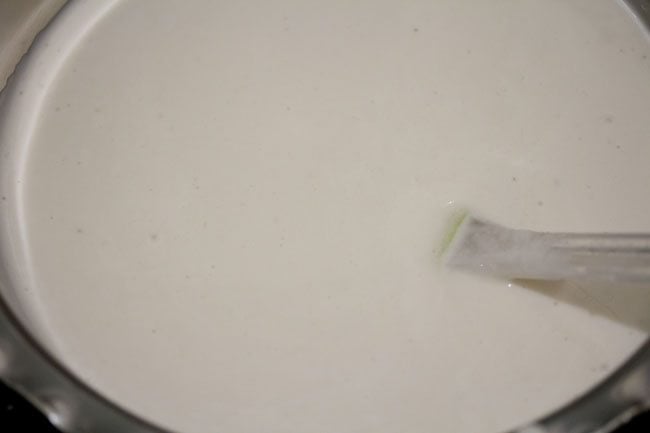
15. In the below photo, you see a well fermented batter the next day. I kept for about 13 hours and 35 minutes at room temperature, as it is cooler during the monsoons where we live.
If you live in a cold place, keep your batter in a lit (but not heated) oven or keep near a warm place.
You can also use the yogurt setting of your Instant Pot to ferment. Use the “low” option when using the yogurt setting as the “medium” option will cook the batter instead of fermenting it. Cover with a separate lid and not the Instant pot lid as it can get locked.
For fermenting batter in the instant pot, time will vary from 8 to 12 hours depending on your room temperature, season, altitude and geographical location.
During winters and cooler days, I always use the instant pot for fermenting dosa batter and it works like a charm.
A well fermented batter will double or triple in volume, have a pleasant sour aroma with many tiny air-pockets.
Once your batter is nicely fermented, cover and refrigerate it when you start to make the potato masala stuffing. In hotter seasons, the batter kept at room temperature will continue to ferment and will become very sour.
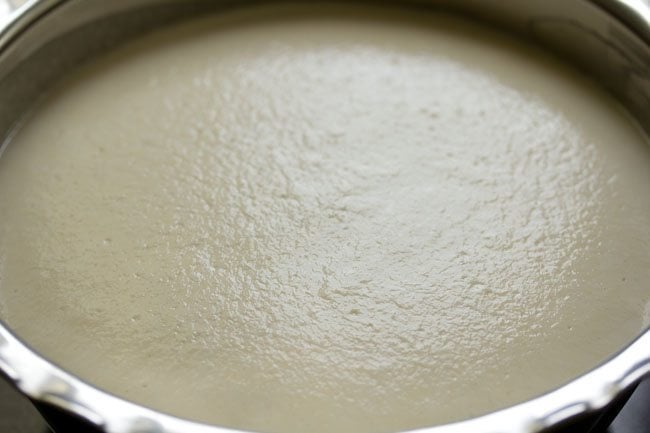
Step #3 – Making potato filling
1. First rinse and then boil 4 medium sized potatoes in 2 cups water for 5 to 6 whistles in a pressure cooker.
You can also boil potatoes in a pan or in an Instant pot. The potatoes have to be completely cooked and fork tender.
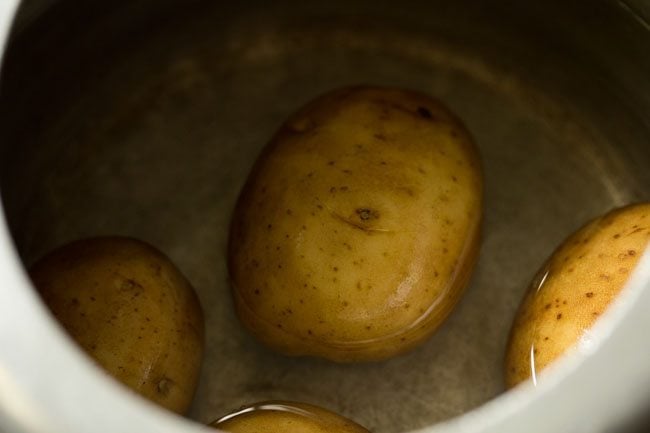
2. When the potatoes are cooking, rinse and soak 1 tablespoon chana dal in ¼ cup hot water for 30 minutes. Then drain all the water from the chana dal and set aside.
If you are out of chana dal, then simply skip it.
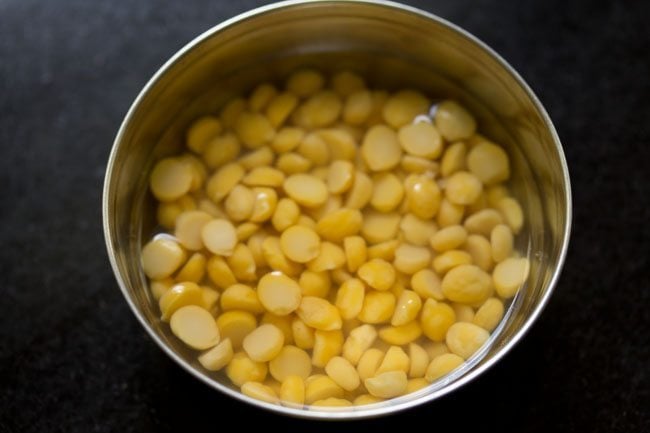
3. When the pressure settles down on its own in the cooker, remove the lid. Drain the potatoes and let them become warm.
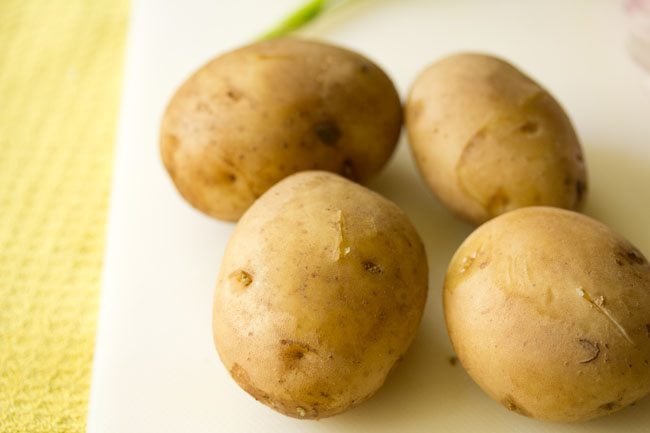
4. Then peel and chop them. Also, thinly slice 2 medium to large onions (200 grams) and chop 1 to 2 green chilies, finely chop 1 inch ginger and some coriander leaves. When you measure, you should have:
- 1.25 cups thinly sliced onions
- 1 teaspoon chopped green chillies
- 1 teaspoon finely chopped ginger
- 3 tablespoons chopped coriander leaves
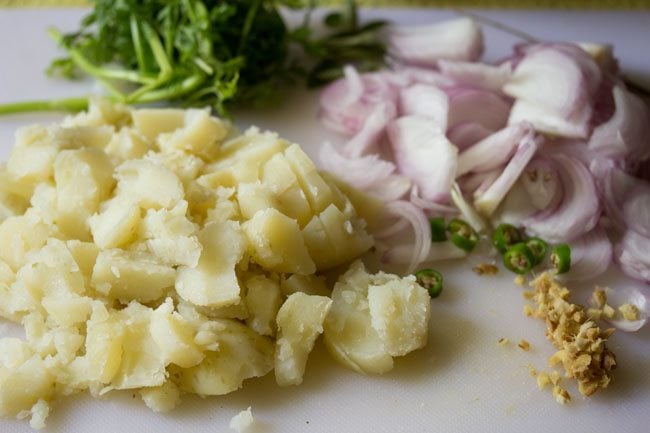
5. Heat oil or ghee in a frying pan or skillet. If using cashews, then fry 2 tablespoons cashews at this step and keep them aside.
Lower the heat and add mustard seeds and let them splutter. You can add ½ teaspoon cumin seeds while tempering.
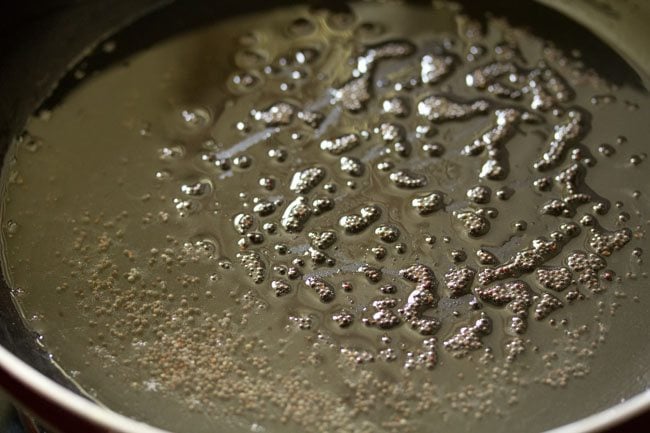
6. Then add the chana dal.
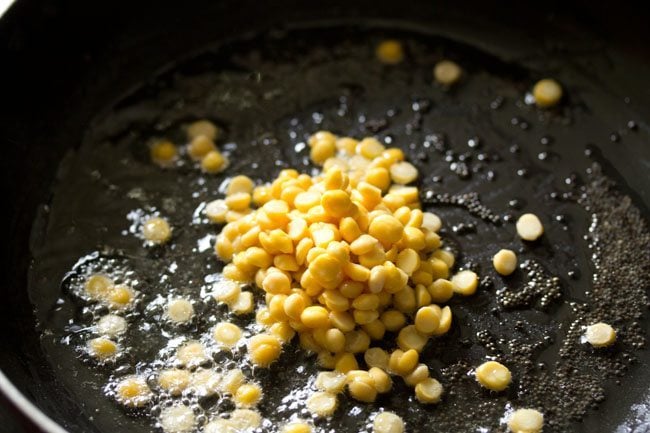
7. Saute the chana dal for 2 to 3 minutes on a low heat or till they turn light golden or golden.
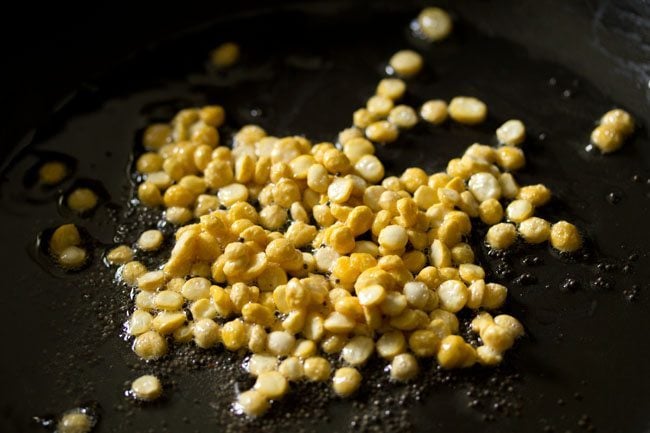
8. Now add the sliced onions, curry leaves, green chilies and ginger.
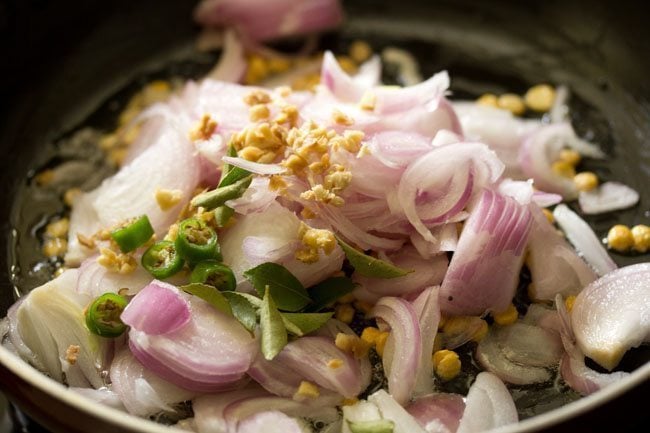
9. Sauté the onions till they soften and turn translucent. Stir often while sautéing onions so that they get evenly cooked.
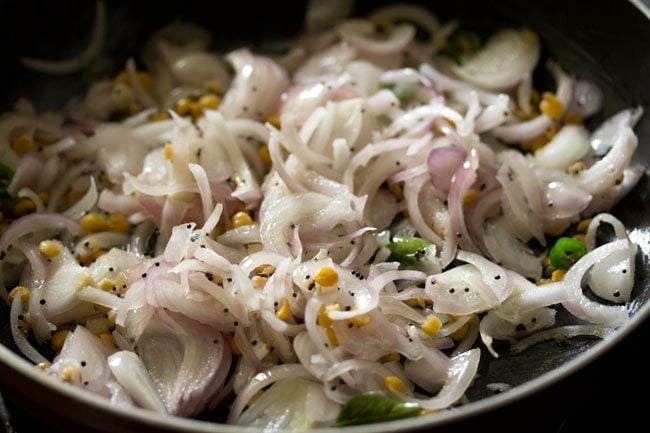
10. Add the turmeric powder and asafoetida (hing). To make it gluten-free use the gluten-free asafoetida or skip it altogether.
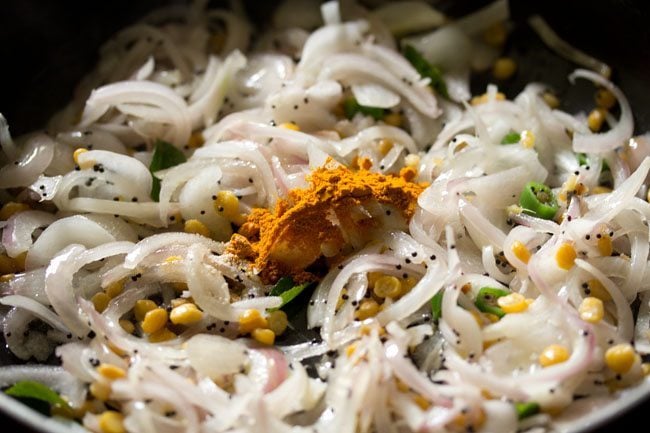
11. Mix very well.
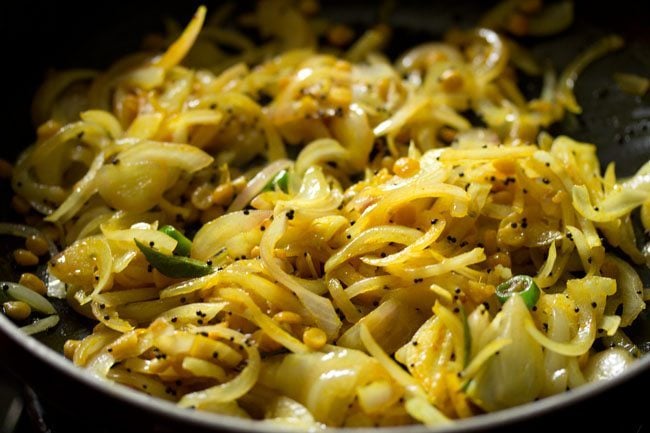
11. Now add ½ cup water.
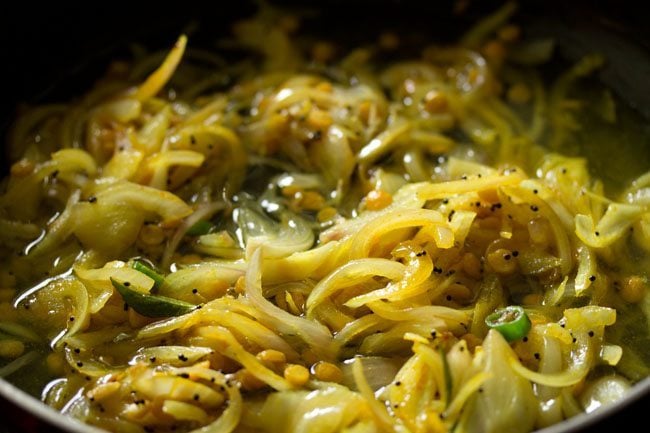
12. Again mix well and simmer for 2 to 3 minutes or till the mixture thickens a bit.
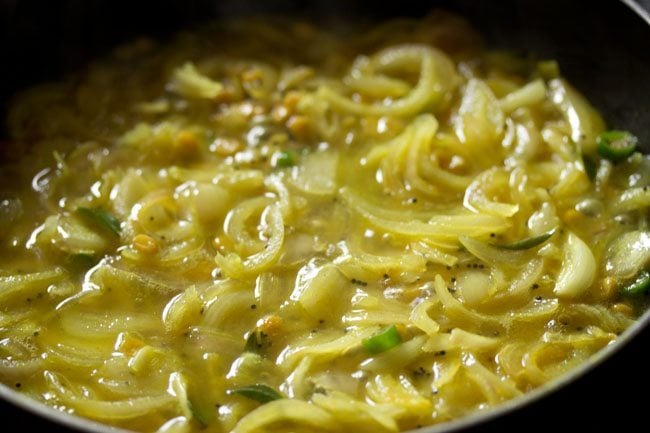
12. Next add the boiled chopped potatoes.
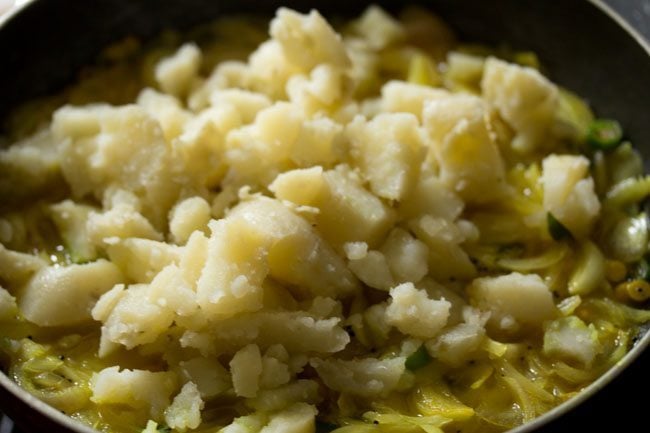
13. Mix very well. You can choose to mash the potatoes slightly while cooking.
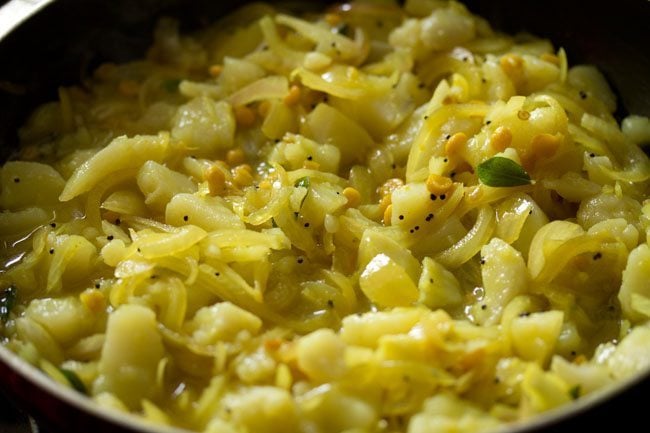
14. Season with salt according to taste. Also add ¼ to ½ teaspoon sugar for a slightly sweet taste. You can add more sugar if you prefer.
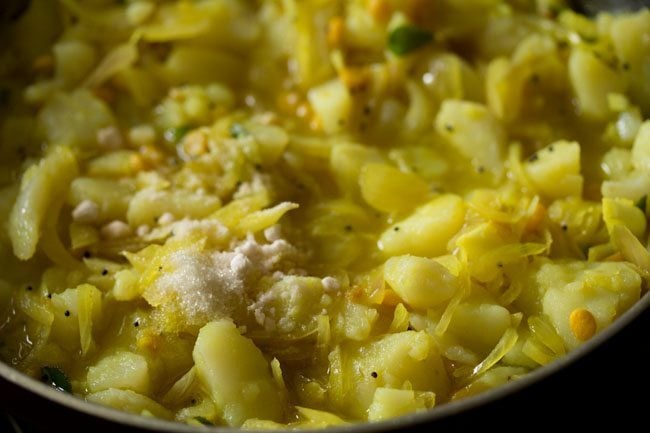
14. And stir again.
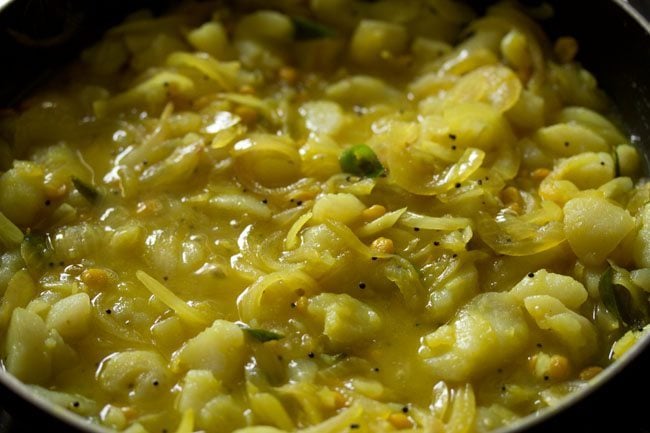
15. Simmer on a low to medium-low heat for 3 to 4 minutes stirring occasionally.
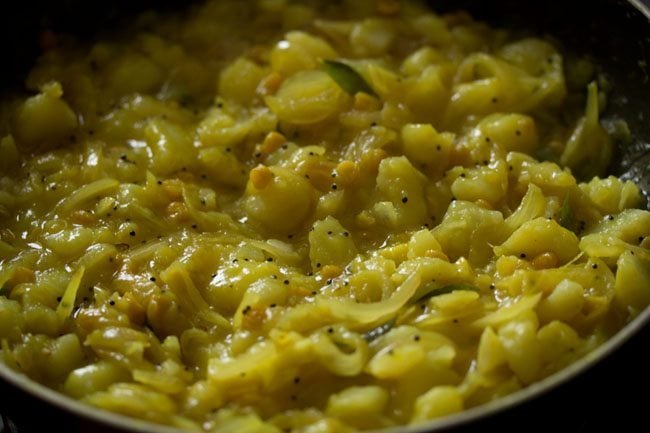
16. Switch off the heat and then add chopped coriander leaves. Also add fried cashews now (if you have fried the cashews earlier as mentioned in step 5 above). Mix well.
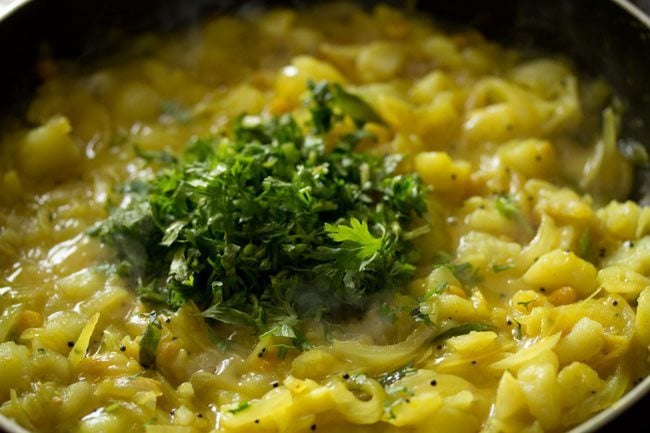
15. Stir and keep the potato masala aside. The potato filling should be moist and easily spreadable on the dosa. Make sure there is no water in the potato stuffing. It should not be of a curry or gravy consistency. This is your basic potato masala for the masala dosa.
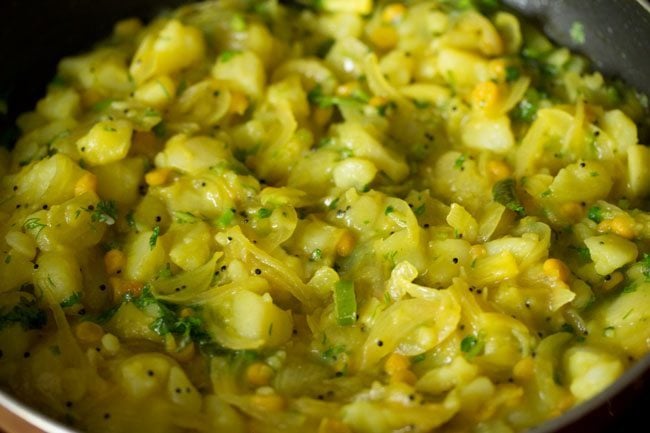
Step #4 – Making masala dosa
1. Now lightly stir the batter, before you begin to make dosa. You will also see tiny air pockets in the batter with an increase in its volume.
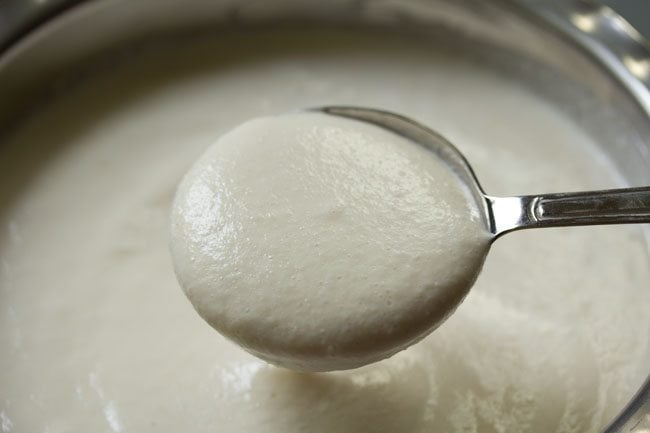
2. Heat a cast iron pan or a flat non-stick pan. The pan should be medium hot. Smear some oil if using an iron pan or griddle. Don’t smear oil on a non stick pan, as then you won’t be able to spread the batter easily.
Dosa batter has a medium-thick to medium flowing consistency and is easily pourable.
TIP 1: If its too thick to spread, add a splash of water and mix it well.
TIP 2: If it has become thin, add some rice flour to thicken it.
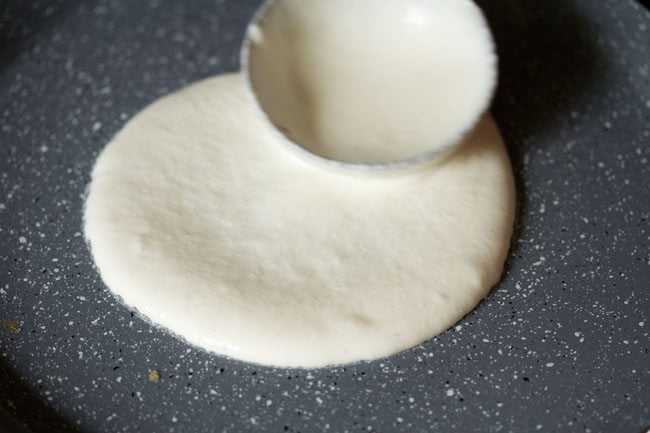
3. Keep the heat to a low, while spreading batter.
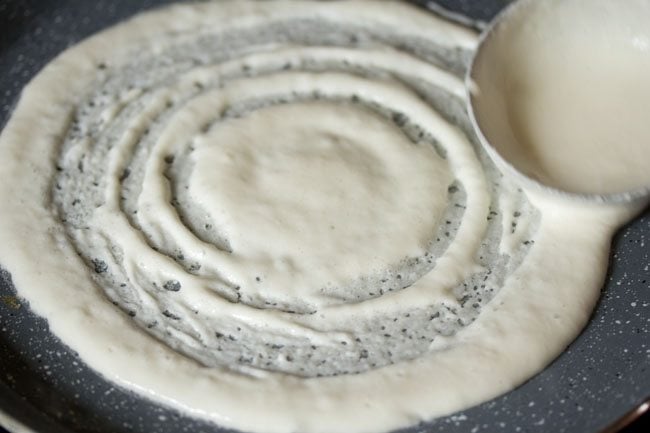
4. Spread the batter in a circular way on the pan. On a medium heat, cook the dosa.
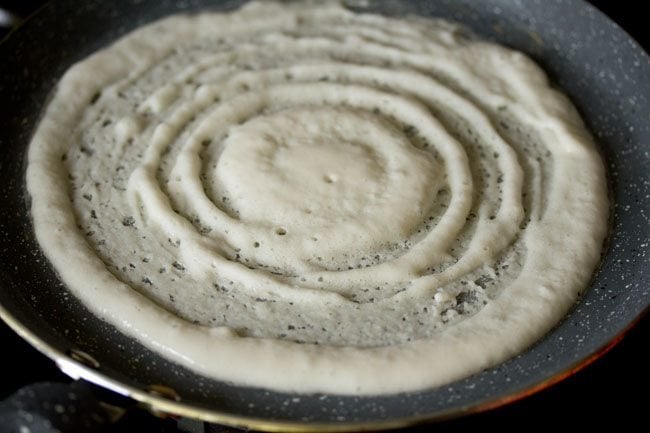
5. Sprinkle some oil on top and edges.
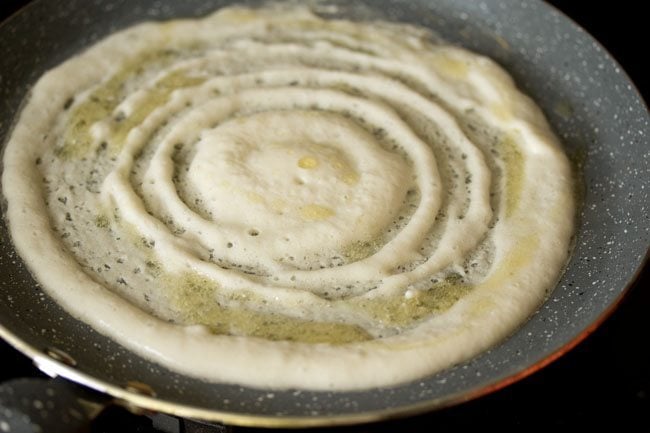
6. Cover the dosa with a lid and let it cook.
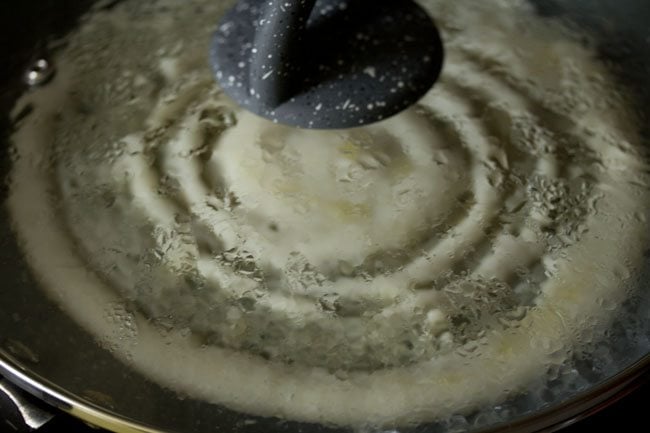
7. Cook till its base becomes golden and crisp. You can spread the oil which was sprinkled earlier on the dosa with a spoon.
You can also opt to flip the dosa and cook the top side.
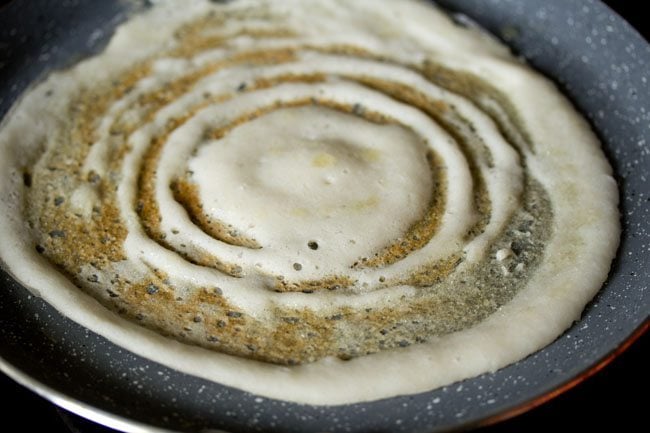
8. When you see the base has become golden, the edges have separated from the pan and the dosa has cooked, place a portion of the potato masala filling on the dosa. You can spread the filling a bit if you want.
If you prefer then you can choose not to place the potato stuffing in the dosa and instead serve it separately. Some people like to have masala dosa served this way. Simply cook the dosa without any added potato filling.
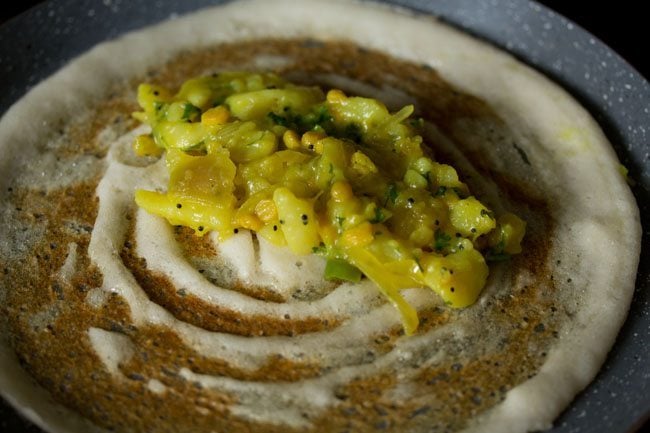
9. Now fold the dosa and serve.
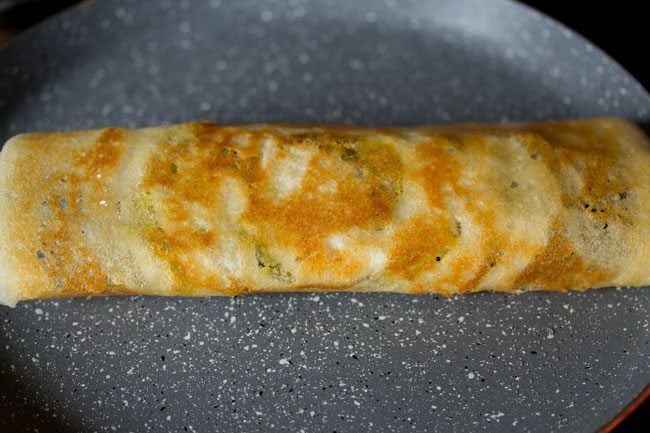
Serving Suggestions
Serve crisp restaurant style masala dosa hot. It’s delicious with sambar and coconut chutney, or your favorite dipping sauces or saucy dishes.
Apart from sambar and coconut chutney, masala dosa also taste good with onion chutney, tomato chutney and peanut chutney.
Storage and Leftovers
The fermented rice and lentil batter stays good for 3 to 4 days in the fridge. You can opt to freeze it for a few weeks too. Store any leftover potato filling in the refrigerator for a day only.
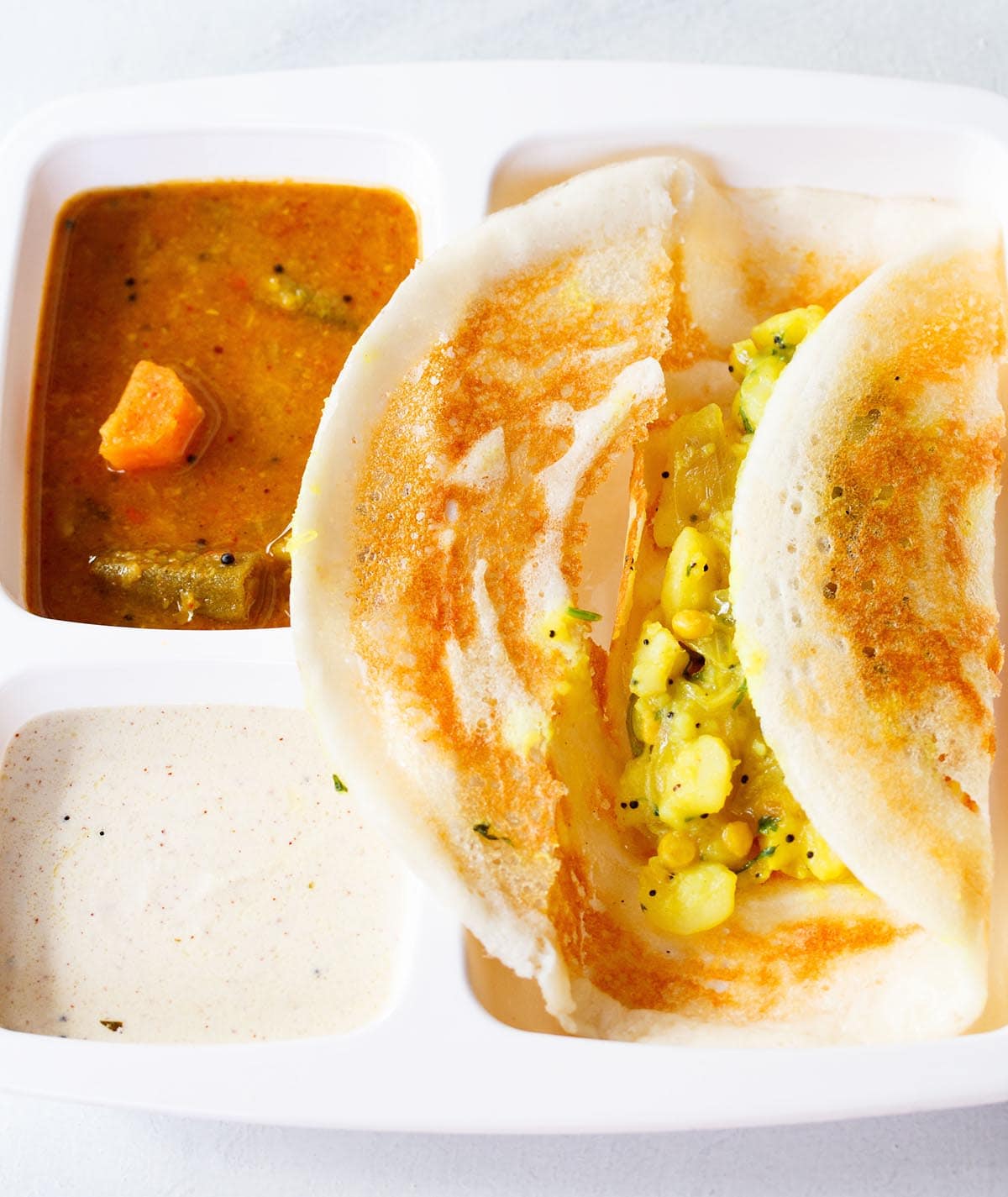

Comments
Post a Comment